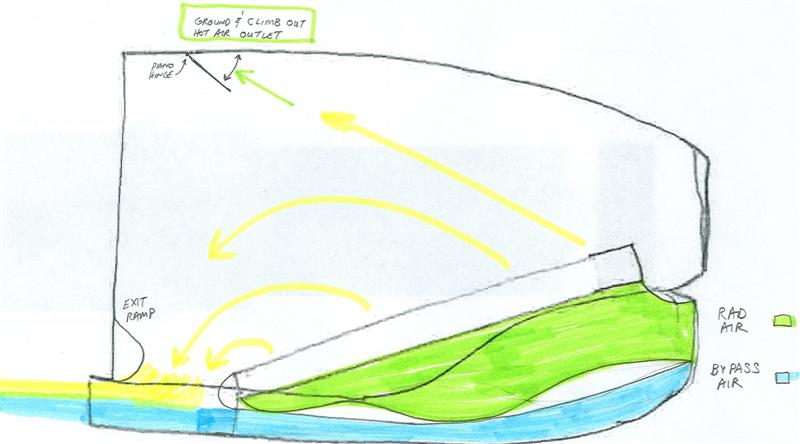|
Doug,
This site has really good pressure data at different
attitudes. Different airframe but the pressure data should not be
that different. I think Bill J. pointed this out to me a couple of year
ago.
Here are the CFD results for
outlets on the top, side, and bottom of the cowling:
Angle Top
Side
Bottom
0.0 -0.35
(116) -0.06 (103)
-0.06 (103)
4.0 -0.52
(123) -0.10
(105) 0.00 (100)
8.0 -0.69
(130) -0.16
(108) -0.07
(103)
Bobby
Doug,
I would call it medium not high pressure. Also if the exit
is more to the size of the cowl and less in front of the windscreen it would be
slightly lower pressure. But I would bet it is even lower pressure in climb
attitude than the bottom of the cowl. No data on that just a hunch.
Bobby
Doug,
I would have to agree with George about the area in front of the windshield
being a high press area. With the door opening to the inside it might be
hard to hold closed with a wire control cable. The by- pass air idea just
might work, You would have to do the math and come up with an acceptable
outlet area that would speed the ram air up to draw a vacuum on the outlet
area. Placement of the nozzle would also be critical, the way you have it
drawn the high speed air could possible blanket the opening and prevent the air
from freely exeting the cowl. Ducting behind the radiator to
efficently blend the air back to the outsidemight also be a viable option,
but I also realise that you don't have much room behind the radiator
to do a lot of ducting.
Bob Perkinson
I have been thinking about how I want to try and flow the air through my
Sam James "Rotary Cowling" and I am wondering what you all thought about the
possibility of creating some "bypass" air to help accelerate the airflow
out of the engine before it re-enters the airflow along the belly of the
aircraft.
I also was wondering if there might be some advantage during ground
operations and climb out if I install some kind of door as seen in the
diagram...
Doug Lomheim
RV-9A, FWF...contemplating the placement of
stuff...


ATT3059588.jpg
|